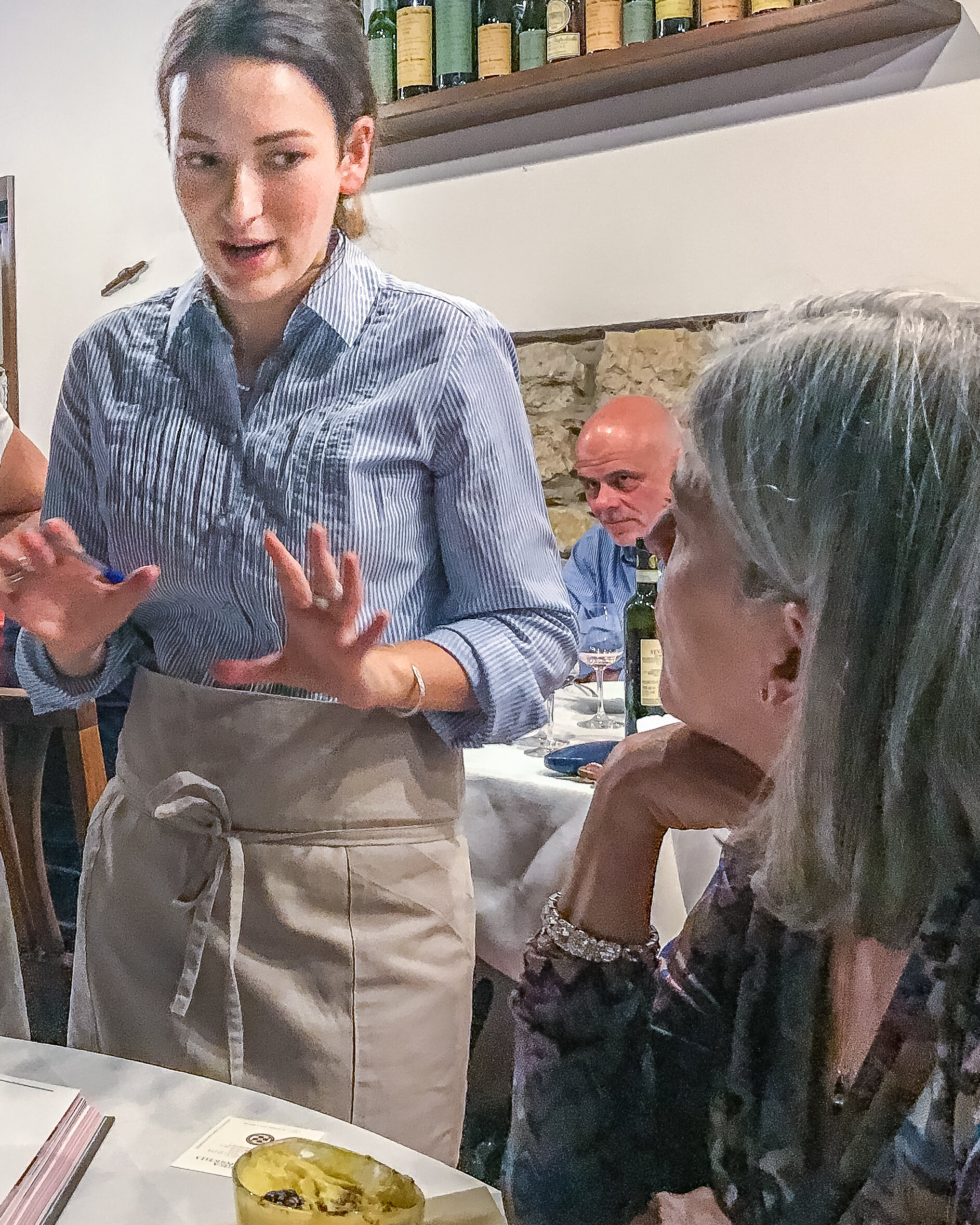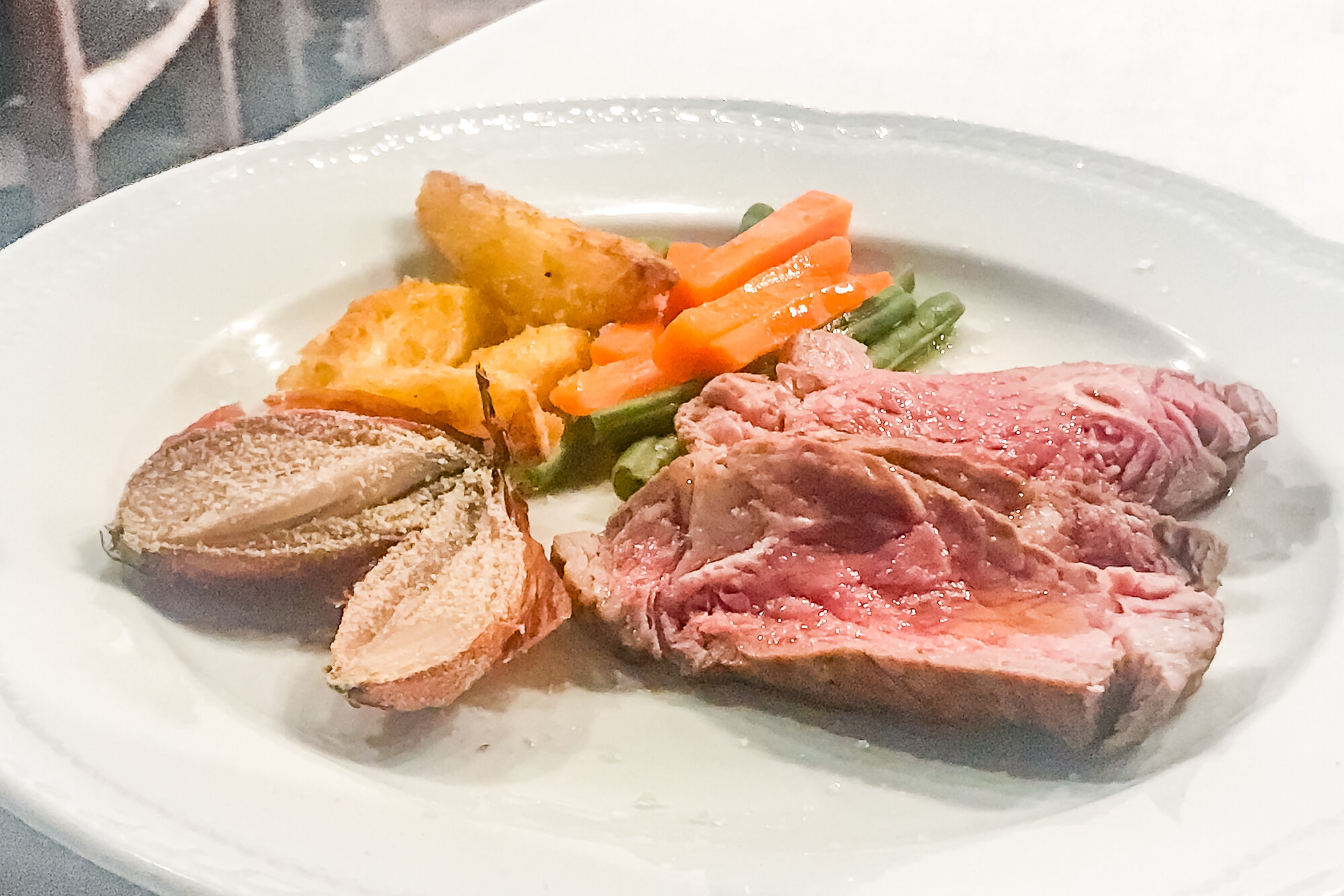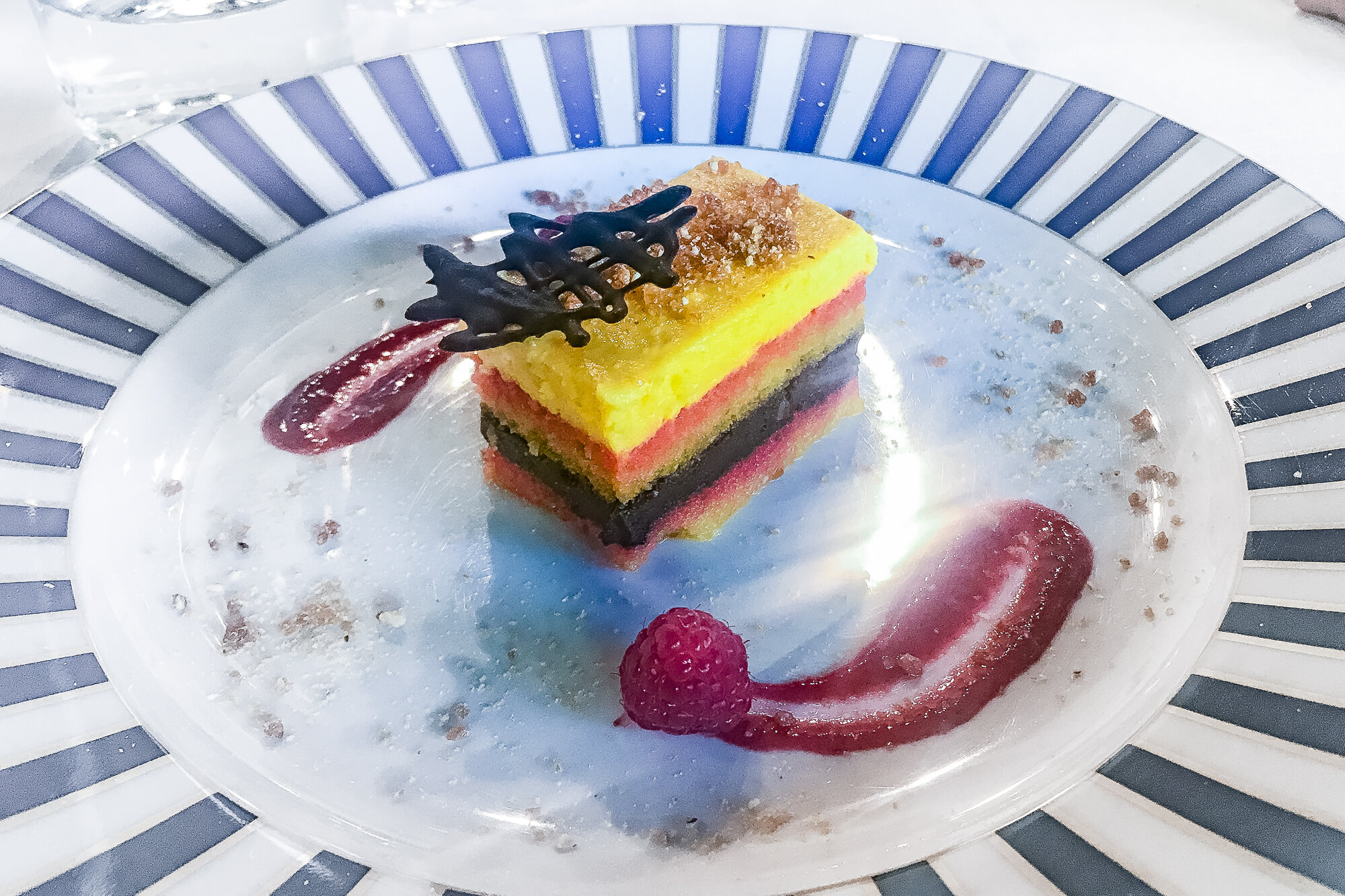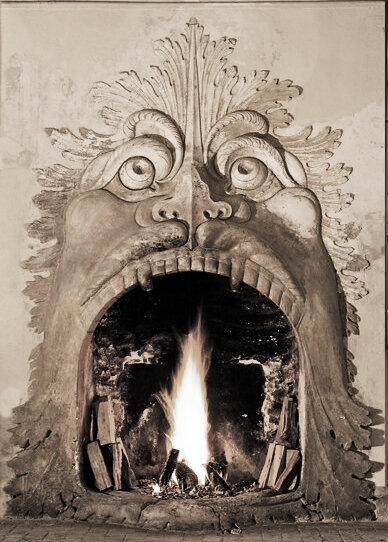Oh, what a lovely place to relax…so peaceful, as it is away from the hustle and bustle of a big city, like nearby Verona.
Villa Giona — our room is within the red box
“...the eighteen rooms of the sixteenth-century Villa welcome you with their comfort and their quiet, so as to discover in an original and exclusive way the sense of relaxation and the dimension of pleasantness”
I can’t say it any better than what is touted on their website in this pull-quote. That ‘dimension of pleasantness’ can be measured only in one’s mind…there is no yard-stick for this sort of thing.
Its history? Villa Giona was originally constructed in the square, fortress style in the late 1400s. During the Renaisence it was “opened up” into its present U-shape. Gardens, complete with statues and fountains, were added in the 1600s.
Where is Villa Giona?
Villa Giona is only 7 miles north of Verona’s historic center. In this aerial photo, you can see Villa Giona dead center, surrounded by vineyards. To the left (west) is their associated winery of Tenute SalvaTerra. We toured the winery under the direction of Silvia, who showed us how their Valpolicella and Amarone are produced.
An aerial view of Villa Giona
See that blue rectangle in the bottom-left quadrant of the photo? More on that later.
Nearby Castelroto
This photo of the very small town of Castelrotto was taken from Villa Giona’s parking lot.
And this view from Castelrotto’s Osteria Castrum reveals the tree-laden Villa Giona compound just to the right of center.
Villa Giona is within the treed compound to the right of center
The Villa’s Rooms
Our key to Il Pisanello
There are 18 rooms in the Villa, and each is uniquely decorated. This trip was taken with in-laws Leslie and Craig Johnson, so we had two rooms at the Villa.
Our room is the one with the red square that you can see in the first photo above. It is known as “Il Pisanello”, and can be seen in the panorama, below. Nice digs, heh?
Panoramic view of our room, Il Pisanello
In these photos, you look from our room to our private balcony, and from our balcony to our private room.
Each room features a colorful Murano Island, hand-blown chandelier, like the one below.
Murano glass chandelier
Just a Bit of High-brow Culture
These two adorn the balustrade of our patio. One of the two seems to be trying to seductively entice the other to give up something precious…though one can never be sure with Renaissance art.
From these detail photos, one seems to be a plumber, perhaps?
Just outside the door to our room, there are a few etchings. I’ve never actually been attracted to etchings, but because I was able to get up close and personal, this one caught my eye. The detail that one sees from afar is created by judiciously-carved/etched lines.
Here is the overall etching…
…and here is a bit of detail of the chariot-riding heroine. I have to say that this art form, which consists of scratching lines into a metal plate, looks like a lot of work, folks.
And thus ends the cultural part of this article!
Around the Villa
Below is the east wing of the Villa, which houses a library and a lounge.
The east wing of the Villa
The Villa’s library
I have to admit that we did no reading of these fine books, as we were too busy seeing the surrounding sights. Ok, I admit that they were in Italian and we couldn’t have read them, anyway.
Breakfast portico
When its time for breakfast, this quiet place is perfect.
Detail of the Villa
On one wall we find a fresco, which seems to be the angel appearing to Mary.
The courtyard fountain in full bloom
A 1/6400th-of-a-second shutter speed reveals the inverted Villa beyond the water glopps.
It’s game-on for Sequence
There is even a nice veranda on the second floor where we found time to play a bit of Sequence…one of our favorite games. Here Craig studies the board for his first move.
A bit of rain caused us to don our jackets prior to our dinner excursion.
Around the Villa
Here are a few photos of the grounds surrounding the Villa Giona.
Please click on an image for a larger view
If you need to take a dip in a pool during the heat of the summer, Villa Giona has one awaiting you!
The Vineyards of SalvaTerra
Bother-in-Law Craig inspects the SalvaTerra vineyards
As we were at the Villa Giona during the grape harvest, we were able to see some of the machinery that is used to pluck the grapes from SalvaTerra’s vines.
Here is a closer look at the machine that straddles the vines. Gathering from two rows at one time, this machine can be used only with the guyot pruning method. Frankly, even seeing the insides of this contraption, I have no idea how it plucks the grapes from the vine…but I swear that it does!
It’s After 5-o’clock!!!
Before heading to dinner (our second meal at Enoteca della Valpolicella), we were offered a bottle of SalvaTerra’s Valpolicella wine. Offered-and-accepted is exactly how we operate.
My intention was to convince you that Villa Giona is a quiet and lovely place to spend a couple of days if you are in the Verona area. Coupled with the outstanding wine, excellent food and friendly eateries in the area, you can’t go wrong.
And if offered a bottle of SalvaTerra’s Valpolicella, I would suggest that you accept!
Ciao for now,
Steve
Don’t miss a single article — Signup for this Italy, Our Italy blog


























































